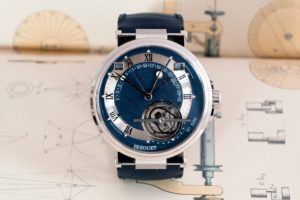
When Watches Teach You Astronomy
Ever since I discovered Hodinkee, it has become my mainstay for escaping boring lectures that I need to attend to complete attendance requirements. Most of the time, this is when I discover interesting articles and learn new tech from the world of watches. This exercise satiates my hunger for knowledge on watches and helps me justify calling myself a horology enthusiast.
In one such class, I came across this beautiful Marine Équation Marchante 5887 by Breguet. In my insignificant opinion, this is very different from their usually classically designed watches. Case in point, the Breguest Classique collection. For me, the most interesting design aspect, apart from the asymmetrical dial of course, are the lugs. The sharp lines on the lugs give this watch a modern touch and add to its allure. Although the busy dial and multiple complications is not my taste, this is definitely a watch that catches one’s attention.

Now that I have exhausted my limited analysis of the design, lets come to the part that I am actually writing this post for. As I mentioned above, the most fulfilling experience of reading a post from Hodinkee is when I learn some new tech. This one was extra special because not only did I learn about a new complication but I learnt about an astronomical phenomenon too, the Equation of Time. According to Fondation de la Haute Horlogerie, “An equation of time watch shows the difference between “true” solar time (that of Nature) and “mean” solar time (that of Man). This rare and poetic complication is usually combined with other astronomical indications.”
‘Poetic’, true, ‘complicated’, even more so. It takes a few reads to just understand what equation of time is, let alone figuring out how the mechanism works. In the most simple terms, due to the asymmetricities of earth’s revolution around the sun and its rotation on its own axis, the calculation of time is not as straightforward as one might think. The mean solar day, as measured by watches is not equal to the average solar day that is measured (although no very accurately) by a sundial. The variation ranges roughly between -16 to +14 minutes.
As I also learnt from the Haute Horlogerie website, there are two kinds of equation on time watches. The simpler one which displays the difference on a sundial and the more complicated one where two coaxial hands simultaneously show the mean and average solar days. The latter is known as the ‘running equation’ watch, for example the Equation du Temps Marchante by Blancpain.
The possibility of learning something new everytime I open a watch blog is what keeps me addicted to this hobby and I am sure this is never going to change.

Awesome new facet of horology revealed. Admittedly, I still can’t figure out the time equation stuff…but then maths and physics were never my strength !
Your internet site has superb content. I bookmarked the website